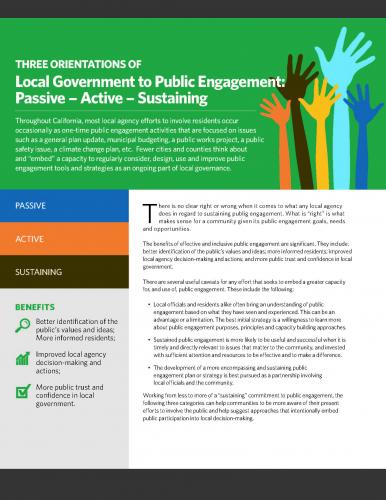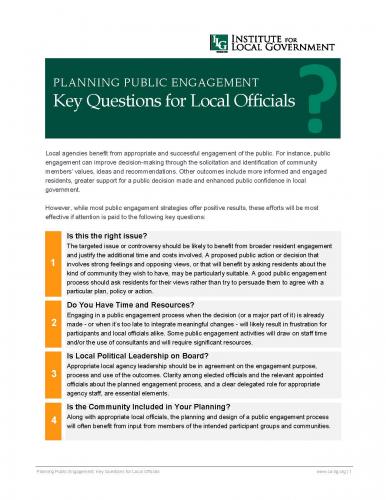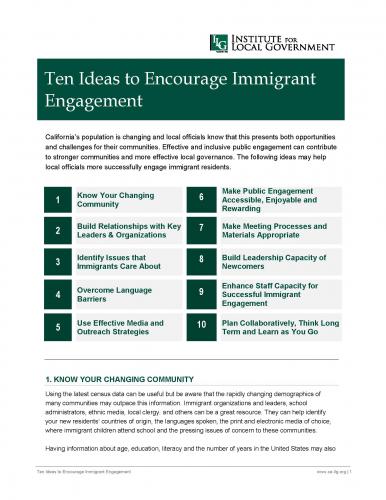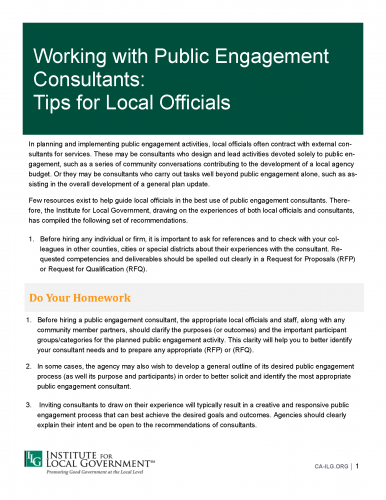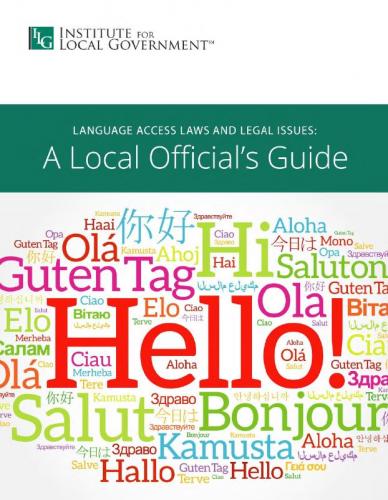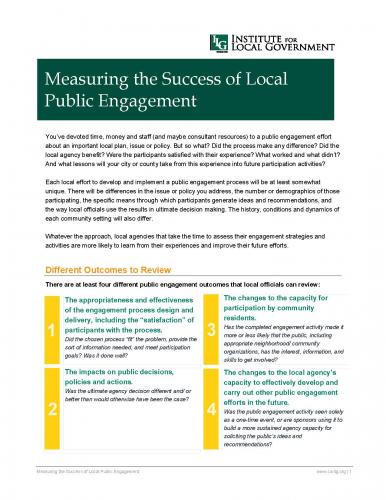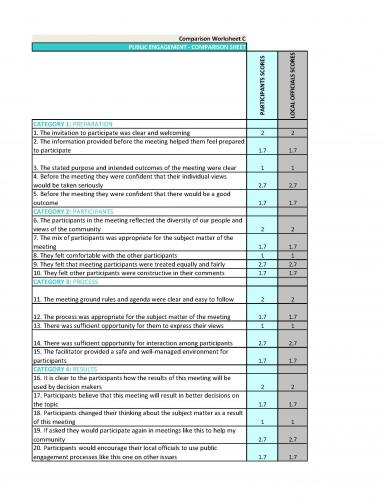Public Engagement Tip Sheets, Whitepapers and Reports
Shorter pieces, often relating to best practices, on specific public engagement topics and challenges.
Related Links
- What is Public Engagement?
- Why Engage the Public?
- Principles of Local Government Public Engagement
- Three Orientations of Local Government Public Engagement: Passive - Active - Sustaining
- Planning Public Engagement: Key Questions for Local Officials
- Beyond the Usuals: Ideas to Encourage Broader Public Involvement in Your Area
- Ten Ideas to Encourage Immigrant Engagement
- Dealing with Deeply Held Concerns and Other Challenges to Public Engagement Processes
- Working Effectively with Public Engagement Consultants: Tips for Local Officials
- Understanding SB 375: Opportunities to Engage the Public in Regional Planning
- Understanding SB 375: Public Participation Requirements
- Collaborative Strategies for Day Labor Centers
- Language Access Laws and Legal Issues: A Local Official's Guide
- How to Harness the Power of Your Community to Address Climate Change: A Local Official's Guide
- Measuring the Success of Local Public Engagement
- Assessing Public Engagement Effectiveness: Rapid Review Worksheets
- Responding to Emotions and Conflicts in Public Hearings
- Emergency Preparedness in the Neighborhood: Engaging Residents as Partners in Disaster Planning and Response
- Eleven Tips to Improve Public Engagement on Realignment Issues
- Briefing Paper #4: Youth and Careers in Local Agencies
- Briefing Paper #3: Youth Engagement and Local Planning: Ideas for Youth Commissions
- Briefing Paper #2: Addressing Climate Change: Ideas for Youth Commissions
- Name Your Networks
- Print-friendly




